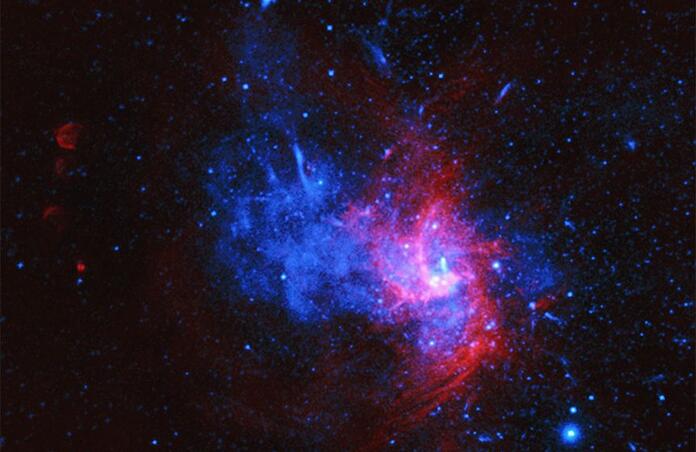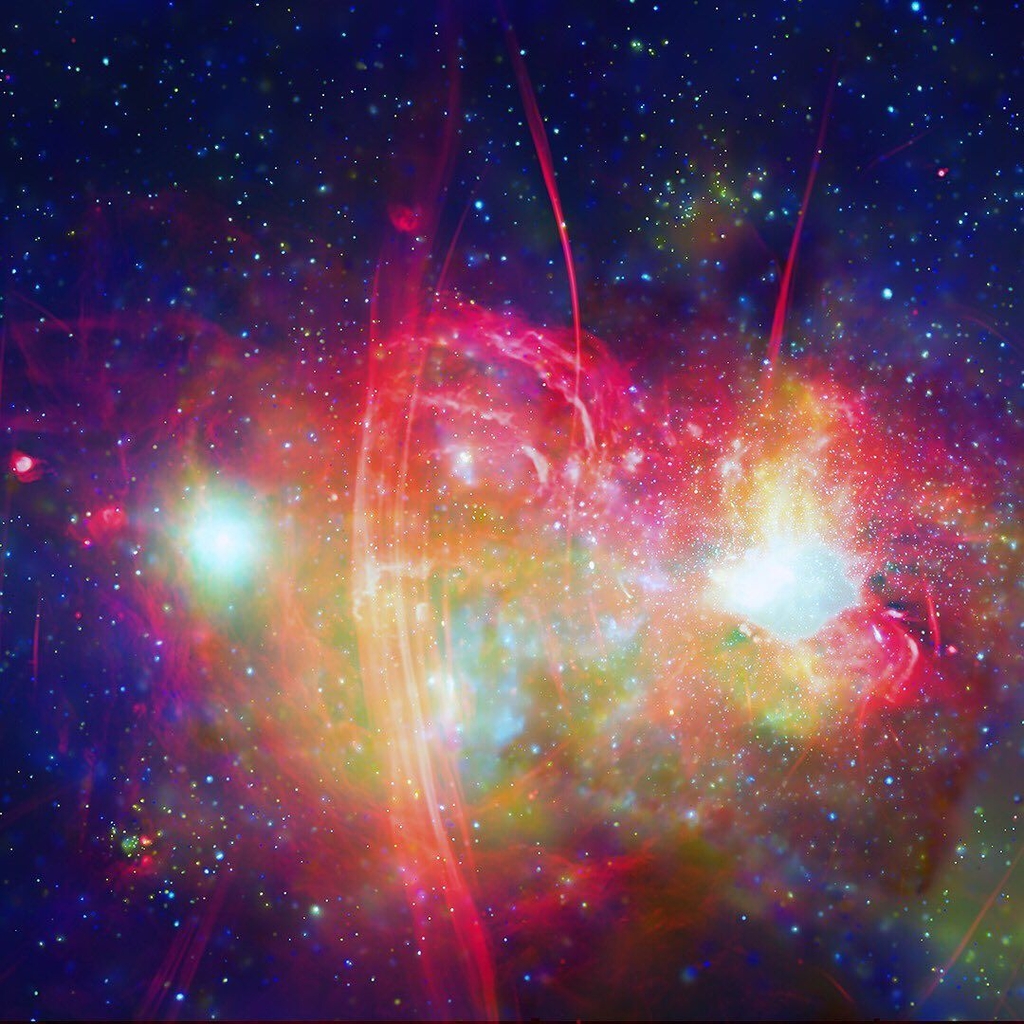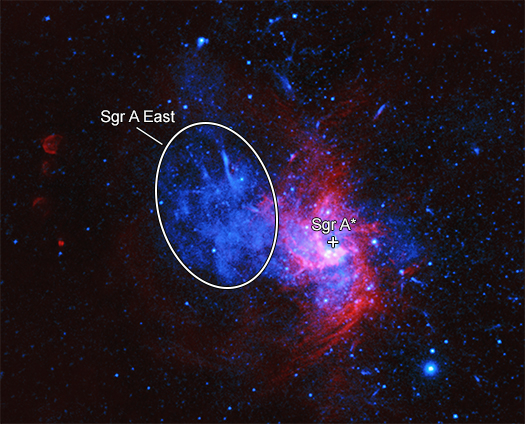Rare type of exploded star may have been discovered

Space telescope Chandra has obtained stunning images of the centre of our galaxy, with an unexpected discovery of an unusual type of supernova.
The 22-year-old Chandra X-ray observatory has already played a major role in advances in various fields of astrophysics: black holes, stellar lifecycles, clustering of galaxies to name a few. X-ray astronomy can only be conducted from space, as the Earth’s atmosphere absorbs close to 100% of the photons in the gamma ray, X-ray and ultraviolet wavelengths.

Now NASA has pointed the space telescope towards the centre of our Milky Way. The image below shows a composite image of Chandra data (blue-green) with radio data (red). Within these clouds of gas hide neutron stars, white dwarfs and of course the Milky Way’s supermassive central black hole Sagittarius A* - it weighs 4 million times as much as the Sun. One supernova remnant in particular has struck astrophysicists. Baptized Sagittarius A East due to its proximity with the black hole, this remnant gas cloud is the first instance in the Milky Way of a Type Iax supernova.

A “normal” type Ia supernova occurs in a binary system with a white dwarf and a companion from which it accretes mass. Once the white dwarf reaches the Chandrasekhar mass (indeed derived by the same Indian astronomer after whom the Chandra space telescope is named), the carbon it contains will start to fuse in a thermal runaway reaction: within a few seconds, enough energy is released from these fusion reactions for the star to explode as a supernova. Due to the fixed mass limit, type Ia have a characteristic light curve, which describes luminosity as a function of time, after the supernova. To be precise, the radioactive decay of Nickel and Cobalt produced in the supernova dominates the spectrum; as the speed of luminosity decline in that light curve correlates with the initial peak brightness, the absolute magnitude of the object can be obtained. Absolute magnitude is a measurement of intrinsic brightness and is crucial to measure distances to faraway galaxies, so that type Ia supernovae are considered a “standard candle” – objects whose absolute magnitude is known, which enables the application of a simple formula to obtain the distance.

Type Iax supernovae are a particular sub-type of these. They are thought to be the result of the accretion of Helium onto the white dwarf, which appears to cause lower luminosities during the supernova. As well, due to the lower energies involved, different quantities of heavy elements are produced, which is what allows astrophysicists to further confirm the nature of the supernova. An overall less powerful supernova with lower ejection velocities also implies that a zombie star will be left behind. It is thought that about 30 Type Iax supernovae have been observed, but a zombie star hasn’t been imaged yet. Chandra’s discovery of what is now the closest known Type Iax supernova may open the door to such an observation.
Cover Image: Sag. A East, X-ray: NASA/CXC/Nanjing Univ./P. Zhou et al. Radio: NSF/NRAO/VLA
Image Credits:
1 - Chandra, NASA/CXC
2 - Centre of the Milky Way, X-ray: NASA, CXC, UMass/D. Wang et al.; Radio: SARAO/MeerKAT
3- Sag. A East, X-ray: NASA/CXC/Nanjing Univ./P. Zhou et al. Radio: NSF/NRAO/VLA
